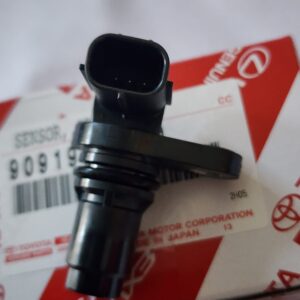The MAP sensor is typically located on the intake manifold, either next to or on the throttle body itself. (On a forced-induction engine, the MAP sensor can be found on the intake tract before the turbo.) Inside the MAP sensor is a sealed chamber that either has a vacuum or a controlled pressure that is calibrated for the engine. Dividing the sensor vacuum and the vacuum from the intake manifold is a flexible silicon wafer (a.k.a. ‘chip’) with a current running through it.
The MAP sensor performs ‘double duty’ as a barometric pressure sensor as soon as the key is turned on. With the key turned on (prior to the engine starting) there is no vacuum in the engine applied to the MAP sensor therefore it’s signal to the ECM becomes a baro reading helpful in determining air density. When you start the engine, pressure in the intake manifold decreases creating a vacuum that is applied to the MAP sensor. When you press on the gas accelerator pedal, the pressure in the intake manifold increases, resulting in less vacuum. The differences in pressure will flex the chip upward into the sealed chamber, causing a resistance change to the voltage, which in turn tells the ECU to inject more fuel into the engine. When the accelerator pedal is released, the pressure in the intake manifold decreases, flexing the clip back to its idle state.
The ECU combines the manifold pressure readings from the MAP sensor with data coming from the IAT (intake air temperature), ECT (Engine Coolant Temperature) sensor, baro reading and engine speed (RPM) to calculate air density and accurately determine the engine’s air mass flow rate for optimal air-fuel ratio.
In stock (can be backordered)
$18,926.31
The MAP sensor is typically located on the intake manifold, either next to or on the throttle body itself. (On a forced-induction engine, the MAP sensor can be found on the intake tract before the turbo.) Inside the MAP sensor is a sealed chamber that either has a vacuum or a controlled pressure that is calibrated for the engine. Dividing the sensor vacuum and the vacuum from the intake manifold is a flexible silicon wafer (a.k.a. ‘chip’) with a current running through it.
The MAP sensor performs ‘double duty’ as a barometric pressure sensor as soon as the key is turned on. With the key turned on (prior to the engine starting) there is no vacuum in the engine applied to the MAP sensor therefore it’s signal to the ECM becomes a baro reading helpful in determining air density. When you start the engine, pressure in the intake manifold decreases creating a vacuum that is applied to the MAP sensor. When you press on the gas accelerator pedal, the pressure in the intake manifold increases, resulting in less vacuum. The differences in pressure will flex the chip upward into the sealed chamber, causing a resistance change to the voltage, which in turn tells the ECU to inject more fuel into the engine. When the accelerator pedal is released, the pressure in the intake manifold decreases, flexing the clip back to its idle state.
The ECU combines the manifold pressure readings from the MAP sensor with data coming from the IAT (intake air temperature), ECT (Engine Coolant Temperature) sensor, baro reading and engine speed (RPM) to calculate air density and accurately determine the engine’s air mass flow rate for optimal air-fuel ratio.
| Warehouse | Inventory at warehouse 2 |
|---|

Get E-mail updates about our latest products and special offers.
Sensors and More is Jamaica’s ultimate online auto parts store. Established in 2020, we specialize in genuine electrical parts for Japanese, Read more…
Reviews
There are no reviews yet.